Discover 35 hidden attractions, cool sights, and unusual things to do in Heidelberg (Germany). Don't miss out on these must-see attractions: Schloss Heidelberg, Zoo Heidelberg, and Heiliggeistkirche. Also, be sure to include Heidelberg Bridge Monkey in your itinerary.
Below, you can find the list of the most amazing places you should visit in Heidelberg (Baden-Württemberg).
Table of Contents
Schloss Heidelberg
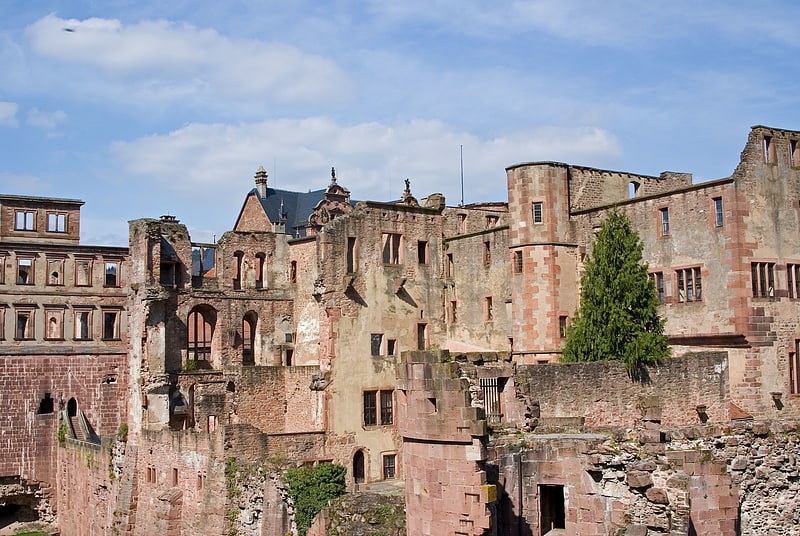
Also known as: Heidelberger Schloss
16th-century ruined castle on a hillside. Heidelberg Castle is a ruin in Germany and landmark of Heidelberg. The castle ruins are among the most important Renaissance structures north of the Alps.
The castle has only been partially rebuilt since its demolition in the 17th and 18th centuries. It is located 80 metres (260 ft) up the northern part of the Königstuhl hillside, and thereby dominates the view of the old downtown. It is served by an intermediate station on the Heidelberger Bergbahn funicular railway that runs from Heidelberg's Kornmarkt to the summit of the Königstuhl.
The earliest castle structure was built before 1214 and later expanded into two castles circa 1294; however, in 1537, a lightning bolt destroyed the upper castle. The present structures had been expanded by 1650, before damage by later wars and fires. In 1764, another lightning bolt caused a fire which destroyed some rebuilt sections.[1]
Address: Schloss Heidelberg, 69117 Heidelberg
Zoo Heidelberg
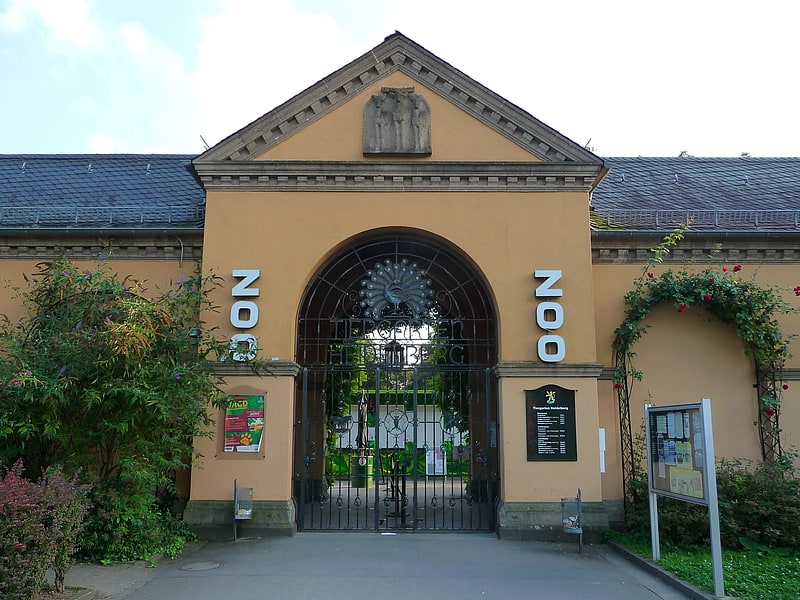
Zoo in Heidelberg, Germany. Heidelberg Zoo is a zoo in Germany which was founded in 1933 and opened for the public on 20 November 1934. Since 1998, the zoo director has been Klaus Wünnemann.[2]
Address: Tiergartenstr. 3, 69120 Heidelberg
Heiliggeistkirche
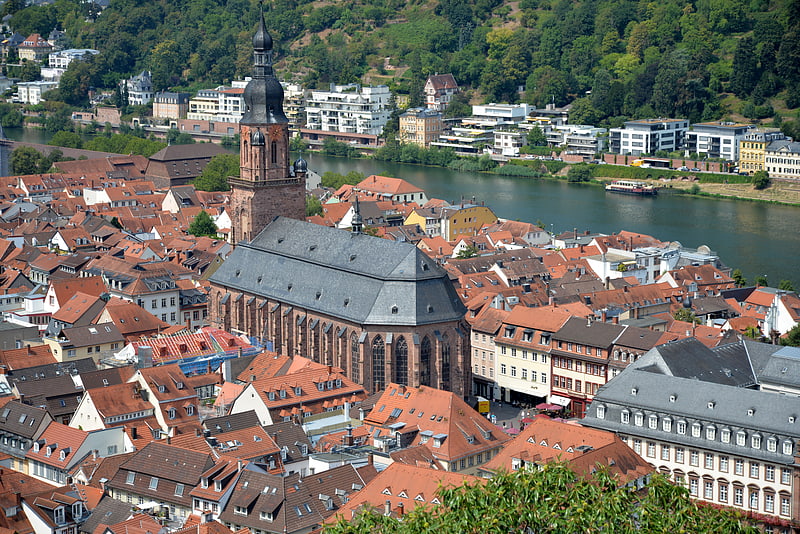
Church with scenic views from the tower. The Church of the Holy Spirit is the largest church in Heidelberg, Germany. The church, located in the marketplace in the old town center, was constructed between 1398 and 1515 in the Romanesque and Gothic styles. It annually receives 1–3 million guests a year, making it among the most visited churches in Germany.
The church was planned as the burial place of the Electors of the Palatinate and as a representative church of the Palatinate royal seat. In the Palatine War of Succession, the princely graves of the Electors were destroyed; today only the grave of the founder of the church, Elector Ruprecht III, remains. The church was also the location of the founding of the Heidelberg University and was the original repository of the Bibliotheca Palatina.
The congregation was originally Roman Catholic, but the church has changed denominations more than ten times through its history. Intermittently, over a 300 year period, the nave and the choir of the church were separated by a wall, allowing both Catholics and Protestants to practice in the church at the same time. The wall was ultimately removed in 1936, and the congregation is now solely Protestant. Today, it is a parish church within the Evangelical Church of Heidelberg and is part of the Evangelical Church in Germany.[3]
Address: Heiliggeiststr. 17, 69117 Heidelberg
Heidelberg Bridge Monkey
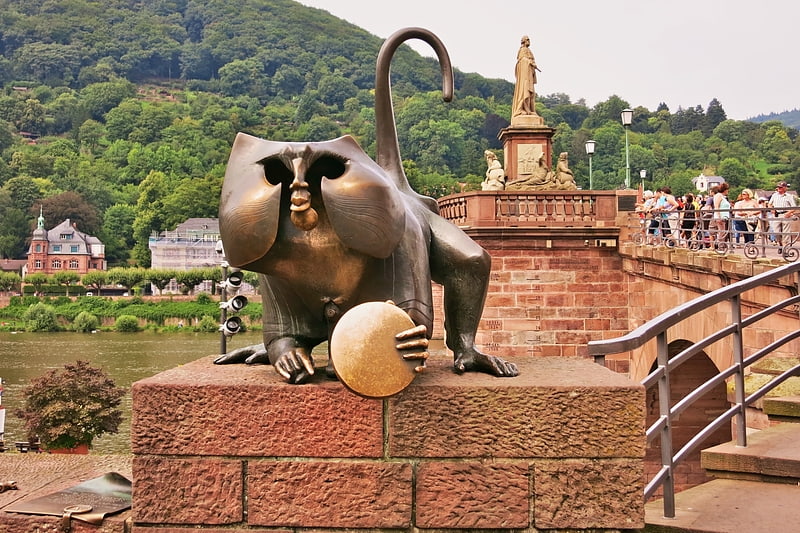
The Heidelberg Bridge Monkey dates back to the 15th century. It was a stone statue sitting in the tower of the Old Bridge, which was located opposite Heidelberg’s Old Town. The purpose of the tower was to instill fear and respect in anyone arriving in the town, while the monkey represented mockery. The statue was destroyed with the tower during the Nine Years' War.
Touching his bare backside, the monkey showed the Electoral Palatinate Greeting to passers-by. His backside was pointed towards the town of Mainz, which was situated opposite the river bank, and thus, the greeting was addressed to the Bishops of Mainz. The people of Heidelberg wanted to demonstrate that the Bishops in Mainz held no power over the Electors of the Palatinate. The intention of the mirror in the monkey’s hand was to encourage people to engage in critical self-reflection.
A poem written by Martin Zeiller in the 17th century can still be seen beside today’s version of the monkey:
“Why are you staring at me? Haven’t you seen the old monkey in Heidelberg? Look around and you probably will see – more monkeys like me!”[4]
Hortus Palatinus
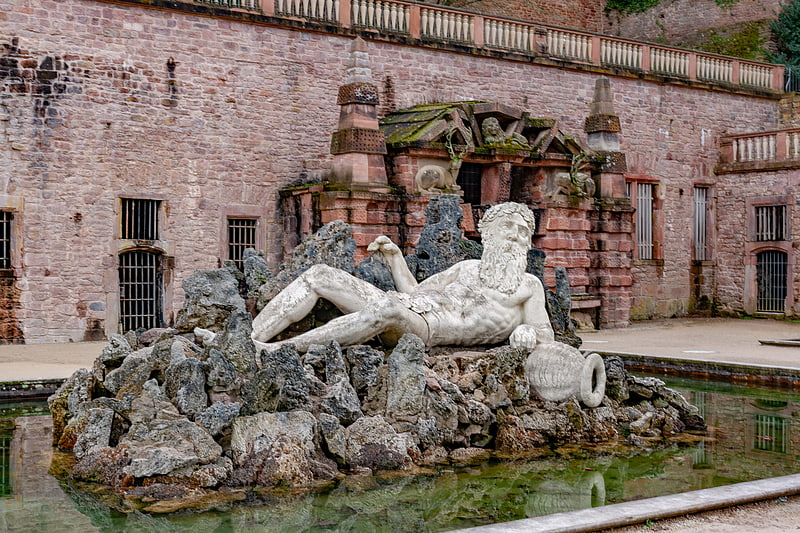
Historical landmark in Heidelberg, Germany. The Hortus Palatinus, or Garden of the Palatinate, was a Baroque garden attached to Heidelberg Castle, Germany. The garden was commissioned by Frederick V, Elector Palatine in 1614 for his new wife, Elizabeth Stuart, and became famous across Europe during the 17th century for the landscaping and horticultural techniques involved in its design. At the time it was known as the 'Eighth Wonder of the World', and has since been termed 'Germany's greatest Renaissance garden.'[5]
Prinzhorn Collection
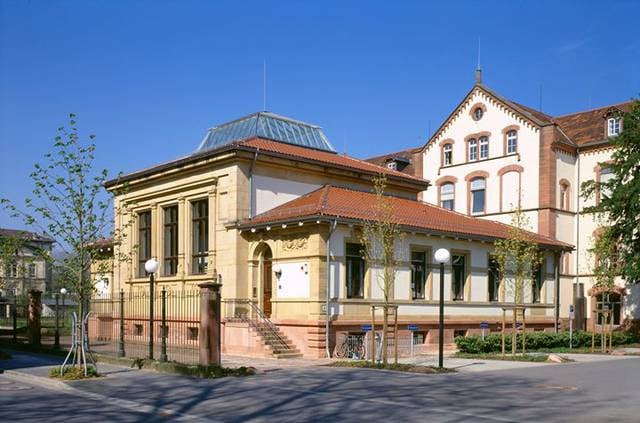
Museum in Heidelberg, Germany. The Prinzhorn Collection is a German collection of art made by mental health patients, housed at the Heidelberg University Hospital. The collection comprises over 20,000 works, including works by Emma Hauck, Agnes Richter and August Natterer.[6]
Address: Vossstr. 2, 69115 Heidelberg
Königstuhl
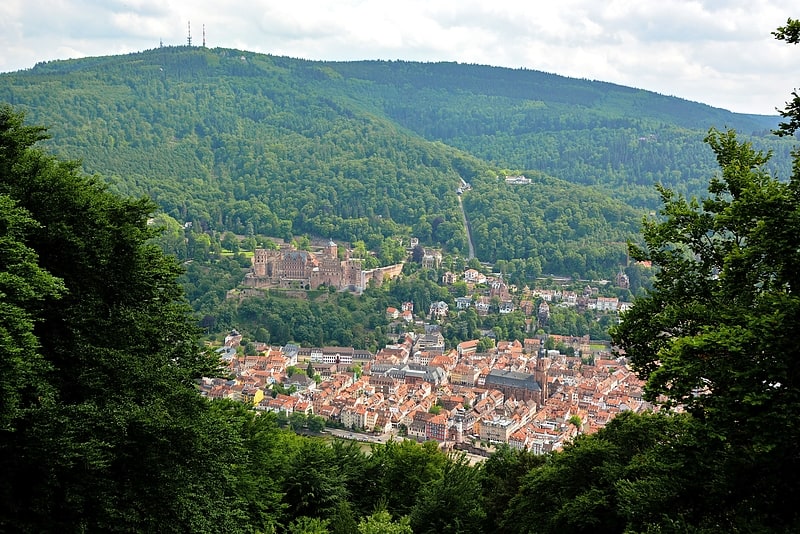
Hill in Germany. The Königstuhl, is a 567.8 metres high hill in the Odenwald Mountains and in the city of Heidelberg, in the German state of Baden-Württemberg. The Königstuhl summit allows visitors views of the city of Heidelberg and the Neckar river. On days with good conditions the view extends to the Pfaelzerwald, which is roughly 40–50 km away.
The hill is linked to Altstadt, by the Heidelberger Bergbahn, a two section historic funicular railway that stops at Heidelberg Castle, located on the lower slopes of the Königstuhl, the Molkenkur restaurant/hotel, and the ultimate stop at the mountain top which host a restaurant, an entertainment park for kids and various walking paths.
The Max Planck Institute for Astronomy is located near the summit of the Königstuhl, as is the historic Landessternwarte Heidelberg-Königstuhl astronomical observatory, established in 1898. Between 1912 and 1957, Karl Wilhelm Reinmuth discovered almost 400 asteroids whilst working from this observatory.
Several telecommunications facilities are located on the Königstuhl, including the Fernsehturm Heidelberg (Digital TV (DVB-T), Radio and Microwave), the Telecom Telecommunication Tower Heidelberg (Microwave and FM) and the now inactive Telecommunication Tower of US-Forces Heidelberg (Microwave).[7]
Address: 12 Königstuhl, Heidelberg
Botanischer Garten

Botanical gardens with greenhouses. The Botanischer Garten der Universität Heidelberg, also known as the Botanischer Garten Heidelberg, is a botanical garden maintained by the University of Heidelberg. It is located at Im Neuenheimer Feld 340, New Campus, Heidelberg, Baden-Württemberg, Germany; portions are open to the public daily except Saturday without charge.
The garden was established in 1593 as a hortus medicus for the University of Heidelberg. As such, it is the third oldest botanical garden in Germany, but has moved seven times since its establishment. The present site was created in 1915 by Georg Albrecht Klebs and head gardener Erich Behnick. It was severely damaged in World War II but has subsequently been rebuilt.
Today the garden contains over 14,000 plant taxa, with a primary focus on its greenhouse collections (4000 m² total area), with strengths in succulents, orchids, and bromeliads. The following 11 special collections form its core holdings:
- Aristolochiaceae
- Bromeliaceae (2854 accessions, 1145 spp.)
- Carnivorous plants
- Cycads
- Cyclanthaceae
- Mediterranean Geophytes
- Succulents of Madagascar (1501 accessions, 847 ssp.)
- Succulents of the New World (2342 accessions, 1695 spp.)
- Succulents of the Old World (3563 accessions, 2314 spp.)
- Tropical Ferns
- Tropical Orchids (4852 accessions, 3510 spp.)
The garden's outdoor sections contains plants from bogs and heath, an alpine garden, fern ravine and inland dune, weedy vineyard, and a systematic collection. The herbarium contains over 250,000 specimens representing more than 50,000 taxa.[8]
Address: Im Neuenheimer Feld 340, 69120 Heidelberg
Dokumentations- und Kulturzentrum Deutscher Sinti und Roma

Cultural institute in Heidelberg, Germany. The Documentation and Cultural Centre of German Sinti and Roma was established in Heidelberg, Germany, in the early 1990s, as a memorial to Sinti and Roma people who were killed by the National Socialists Party. After several years of extension work collecting stories from the victims, conducting research, and conversion, the building complex was ceremonially opened to the public on 16 March 1997, and was supported by the attendance of many Roma and Sinti survivors. It is the world's first permanent exhibition on the genocide perpetrated upon the Sinti and Roma by the Nazis. The documentation Centre has three levels and covers an area of almost 700 square meters, and traces the history and stories of the persecution of the Sinti and Roma under National Socialism. The institution is overseen by Central Council of German Sinti and Roma, supported by the city of Heidelberg, and is the beneficiary of special funds from the German Federal Government and the land of Baden-Württemberg.[9]
Address: Bremeneckgasse 2, 69117 Heidelberg
Heiligenberg

Hill in Germany. The Heiligenberg is a large wooded hill overlooking the town of Heidelberg in Baden-Württemberg, Germany. It rises to around 440 metres NHN. It has been the site of many historic and pre-historic constructions, including a Celtic hilltop fortification, a Roman sacred precinct, several medieval monasteries, modern lookout towers and the Heidelberg Thingstätte, built by the Nazis in the 1930s.[10]
Address: Auf dem Heiligenberg 1, 69121 Heidelberg
Thingstätte

Theatre. The Heidelberg Thingstätte is an open-air theatre on the Heiligenberg in Heidelberg, Baden-Württemberg, Germany. It was built during the Third Reich for performances and events as part of the Thingspiel movement. Until 2018, it was primarily used for unofficial Walpurgis Night celebrations. It is a protected cultural monument.[11]
Address: Auf dem Heiligenberg, 69121 Heidelberg
Deutsches Apotheken-Museum

Museum, Specialty museum, Science museum, History museum
Address: Schlosshof 1, 69117 Heidelberg
President Friedrich Ebert Memorial
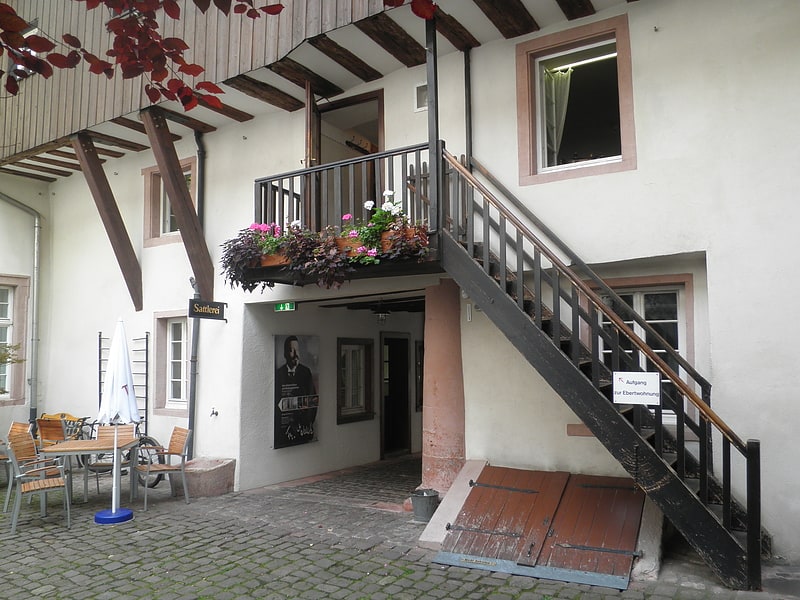
Also known as: Reichspräsident-Friedrich-Ebert-Gedenkstätte
Museum in Heidelberg, Germany. The President Friedrich Ebert Memorial in Heidelberg commemorates the life and work of Friedrich Ebert, who was born in the house on 4 February 1871. From humble origins, he became a member of the Social Democratic Party of Germany and was finally elected as the first German democratic head of state in 1919. Faced with extreme internal and external pressures, he prepared the way for parliamentary democracy in Germany after the end of World War I. In these years he preserved national unity and made a vital contribution to the creation of a social and democratic republic.[12]
Address: Pfaffeng. 18, 69117 Heidelberg
Kurpfälzisches Museum
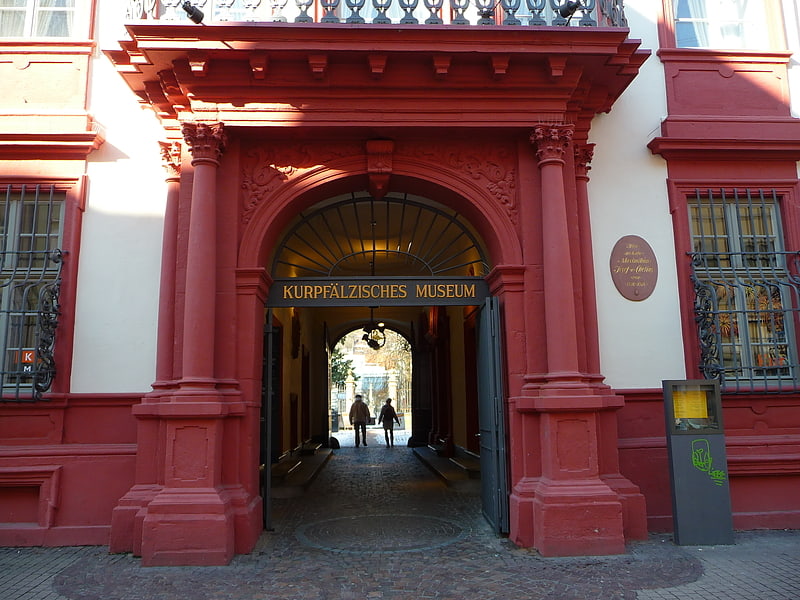
Museum in Heidelberg, Germany. The Kurpfälzisches Museum is a museum of art and archaeology in Heidelberg, Germany. It is located in the Palais Morass. It was founded in the late 1870s, when the city of Heidelberg purchased the private collection of the artist and art historian Charles de Graimberg.[13]
Address: Hauptstraße 97, 69117 Heidelberg
Alte Brücke
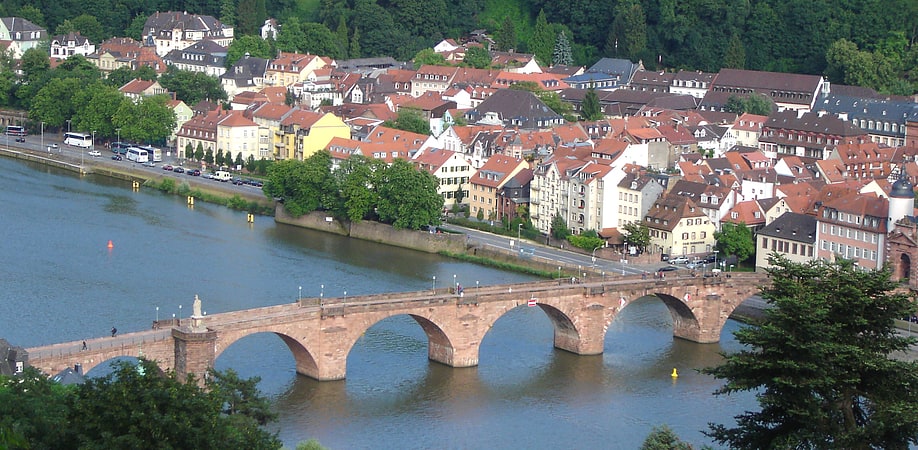
Arch bridge in Heidelberg, Germany. The Karl Theodor Bridge, commonly known as the Old Bridge, is an arch bridge in Heidelberg that crosses the Neckar river. It connects the Old City with the eastern part of the Neuenheim district of the city on the opposite bank. The current bridge, made of Neckar sandstone and the ninth built on the site, was constructed in 1788 by Elector Charles Theodore, and is one of the best-known landmarks and tourist destinations in Heidelberg.[14]
Stift Neuburg
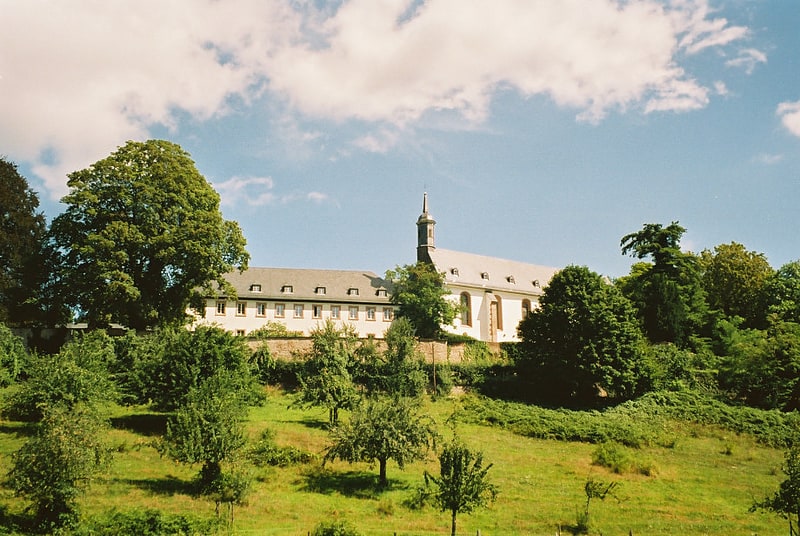
Also known as: Abtei Neuburg
Monastery in Heidelberg, Germany. Neuburg Abbey near Heidelberg in Baden-Württemberg is a Benedictine monastery dedicated to Saint Bartholomew, and part of the Beuronese Congregation.[15]
Address: Stiftweg 2, 69118 Heidelberg
Monastery of St. Michael

Also known as: Michaelskloster
Historical landmark in Heidelberg, Germany. The Monastery of St. Michael German: Michaelskloster, on the Heiligenberg in Heidelberg, was a branch of the nearby Lorsch Abbey. The ruined complex that can be seen today was built beginning in 1023. The monastery was occupied successively by several religious orders before it was abandoned in the 16th century.
The first mention of the monastery is in the Lorsch codex, from the 12th century, which dates the founding of the monastery to 870. No remains of an earlier monastery have been found, so this might have been merely an estimate of the founding.[16]
Weißer Stein
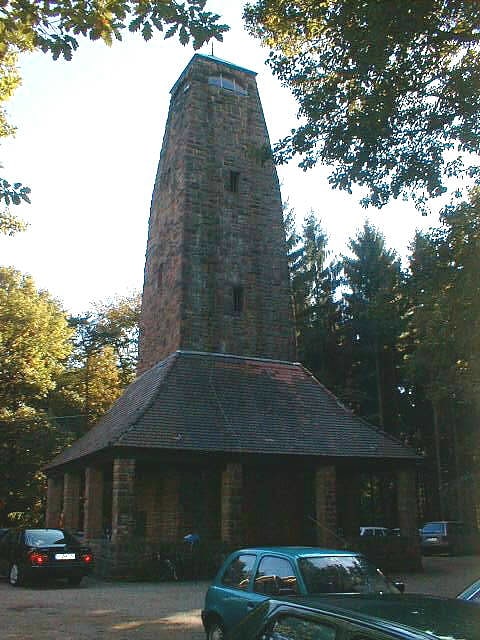
Hill in Germany. Weißer Stein is the name of a 548-metre high hill in the Odenwald, north of Heidelberg and east of Dossenheim.
On Weißer Stein is a 20 m tall lookout tower. It was built in 1906 by the members of the Odenwald club. In good weather other high mountains of the Odenwald can be seen, such as Melibokus, Katzenbuckel, Tromm and Neunkircher Höhe. Near the tower is the Höhengaststätte Weißer Stein tavern with a beer garden.
Nearby is the 108 m (354 ft) tall broadcast tower of the Deutsche Telekom AG (German telephone company) and an additional antenna mast. The broadcast tower is a Type 11.
Coordinates:
- Lookout tower: 8°43'23" East, 49°27'11" North
- Broadcast tower: 8°43'26" East, 49°27'15" North
- Antenna mast: 8°43'17" East, 49°27'10" North
Address: Im Wald, Heidelberg
Märchenparadies Heidelberg

The Fairytale Paradise Königstuhl is an amusement park on the summit of the Heidelberg Königstuhl. It was opened in 1972 by the Heidelberger Straßen- und Bergbahn AG with the aim of better utilizing the Heidelberg mountain railroad. In 1974, the facility was taken over by a private operator.
Attractions at the park, which is geared more toward younger children, include animated storytelling groups, an electric horse-drawn train, and disco scooters.
Address: Koenigstuhl 5a, 69117 Heidelberg
Deutsches Krebsforschungszentrum
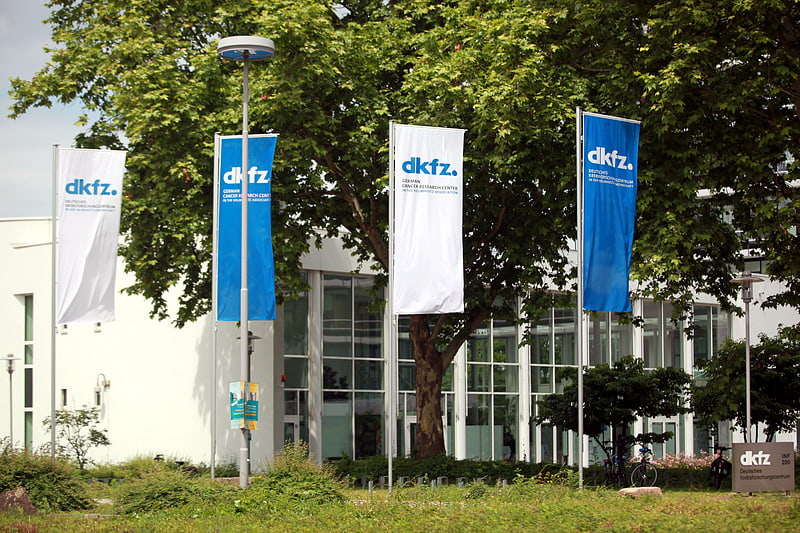
The German Cancer Research Center, is a national cancer research center based in Heidelberg, Germany. It is a member of the Helmholtz Association of German Research Centres, the largest scientific organization in Germany.[18]
Address: 280 Im Neuenheimer Feld, Heidelberg
Hoher Nistler
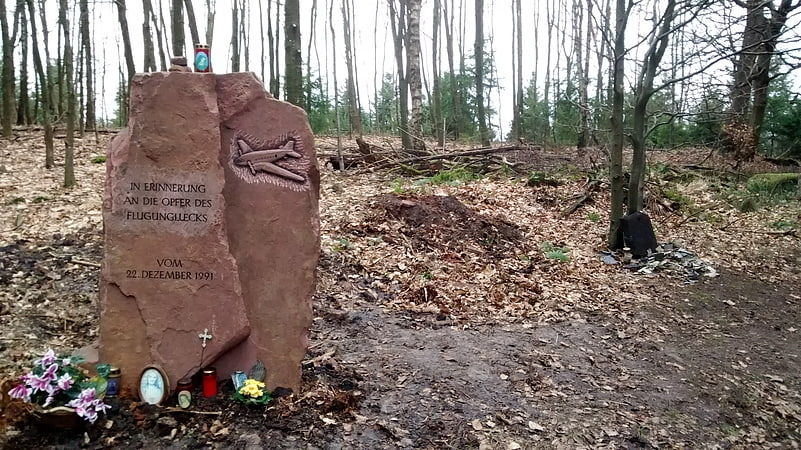
Mountain in Germany. Hoher Nistler is a mountain of Baden-Württemberg, Germany.[19]
Gaisberg
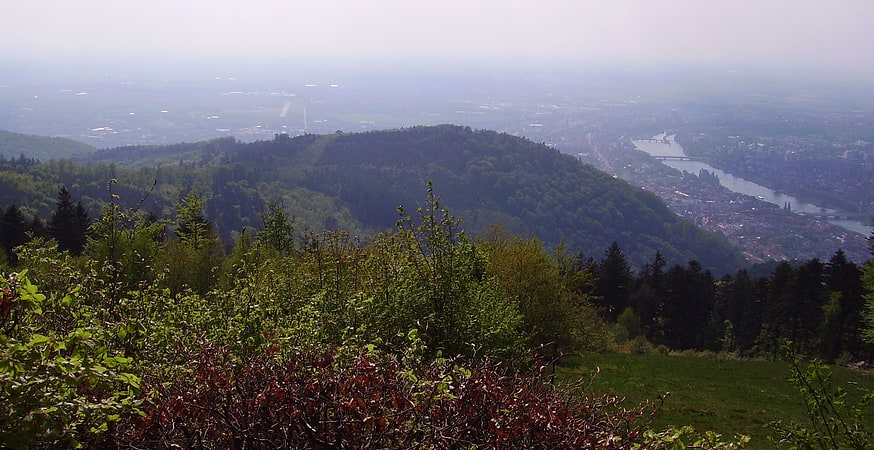
Mountain in Germany. Gaisberg is a mountain of Baden-Württemberg, Germany.[20]
Theater & Orchester Heidelberg
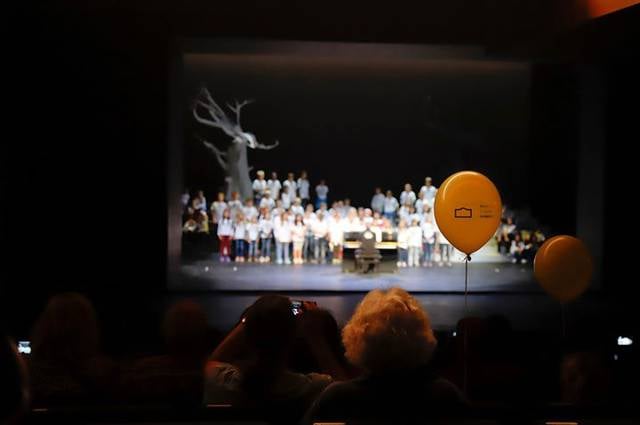
Also known as: Theater und Orchester Heidelberg
Theater & Orchester Heidelberg is a theatre in Heidelberg, Baden-Württemberg. The Heidelberger Stückemarkt, an annual theatre festival and competition for emerging playwrights, is held at the theatre.[21]
Address: Theaterstr. 10, 69117 Heidelberg
Universitätsbibliothek
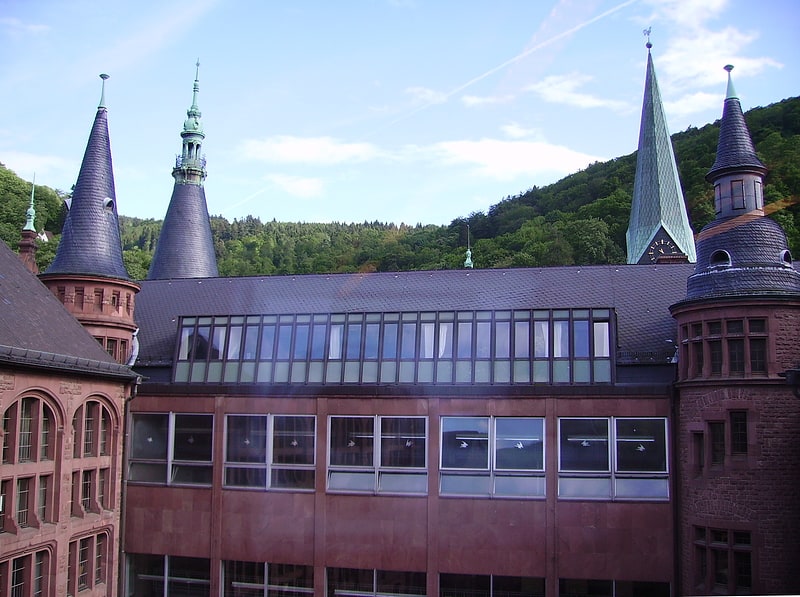
University library in Heidelberg, Germany. The University Library Heidelberg is the central library of the University of Heidelberg. It constitutes together with the 83 decentralized libraries of the faculties and institutes the University Library System, which is headed by the director of the University Library. The University Library holds special collections in literature concerning the Palatinate and Baden, egyptology, archeology, the history of art, and South Asia. It holds about 3.2 million books, 10,732 scientific periodicals, and about 500,000 other media such as microfilms and video tapes. It holds 6,600 manuscripts, 1,800 incunabula, 110,500 autographs, and a collection of old maps, paintings, and photographs. The libraries of the faculties and institutes hold another 3.5 million printed books. In 2005, 34,500 active users of the University Library accessed 1.4 million books a year. The conventional book supply is complemented by numerous electronic services, such as 3,000 commercial scientific journals that can be accessed via e-journal.[22]
Address: Ploeck 107-109, 69117 Heidelberg
Heidelberg-Ziegelhausen
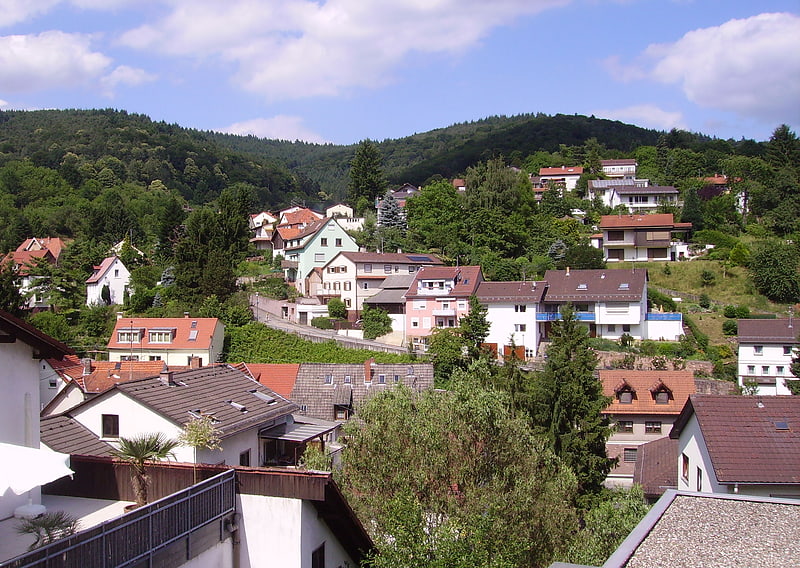
Heidelberg-Ziegelhausen is a residential district at the eastern perimeter of the city of Heidelberg, Germany.
Ziegelhausen lies on the northern banks of the Neckar River and extends northward into the Odenwald Forest. It has a small shopping district but is dominated by single-family and multiple-family houses.
Ziegelhausen's abundant supply of water and steep, south-facing slopes made it a center of the Neckar Valley laundry trade in the 18th and 19th centuries. Johannes Brahms summered in Ziegelhausen during the 1880s.
Ziegelhausen has several small parks, including one that features a playground of Niki de Saint-Phalle-inspired tile sculptures.
The symbol of Ziegelhausen is a house with red clay roof shingles. It is on local teams' shirt for most sports.[23]
Königstuhl-Mountain
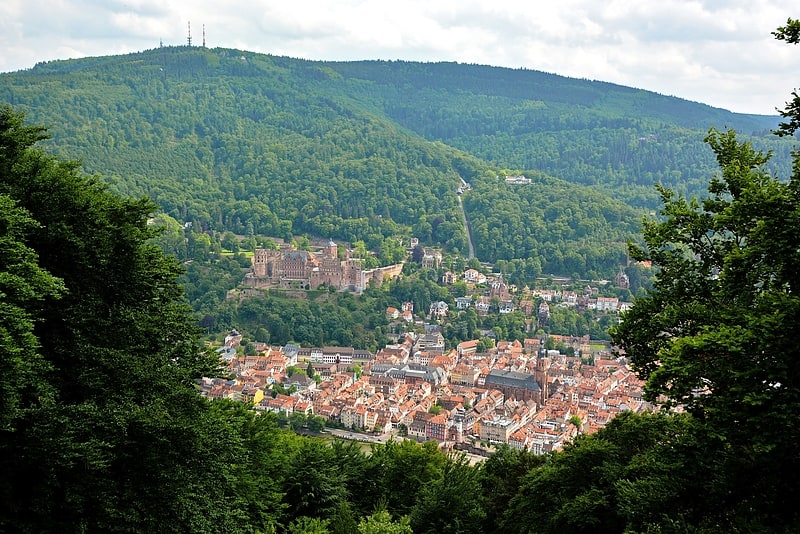
Also known as: Königstuhl
Peak with a funicular and city views. The Königstuhl, is a 567.8 metres high hill in the Odenwald Mountains and in the city of Heidelberg, in the German state of Baden-Württemberg. The Königstuhl summit allows visitors views of the city of Heidelberg and the Neckar river. On days with good conditions the view extends to the Pfaelzerwald, which is roughly 40–50 km away.
The hill is linked to Altstadt, by the Heidelberger Bergbahn, a two section historic funicular railway that stops at Heidelberg Castle, located on the lower slopes of the Königstuhl, the Molkenkur restaurant/hotel, and the ultimate stop at the mountain top which host a restaurant, an entertainment park for kids and various walking paths.
The Max Planck Institute for Astronomy is located near the summit of the Königstuhl, as is the historic Landessternwarte Heidelberg-Königstuhl astronomical observatory, established in 1898. Between 1912 and 1957, Karl Wilhelm Reinmuth discovered almost 400 asteroids whilst working from this observatory.
Several telecommunications facilities are located on the Königstuhl, including the Fernsehturm Heidelberg (Digital TV (DVB-T), Radio and Microwave), the Telecom Telecommunication Tower Heidelberg (Microwave and FM) and the now inactive Telecommunication Tower of US-Forces Heidelberg (Microwave).[24]
Altes Hallenbad
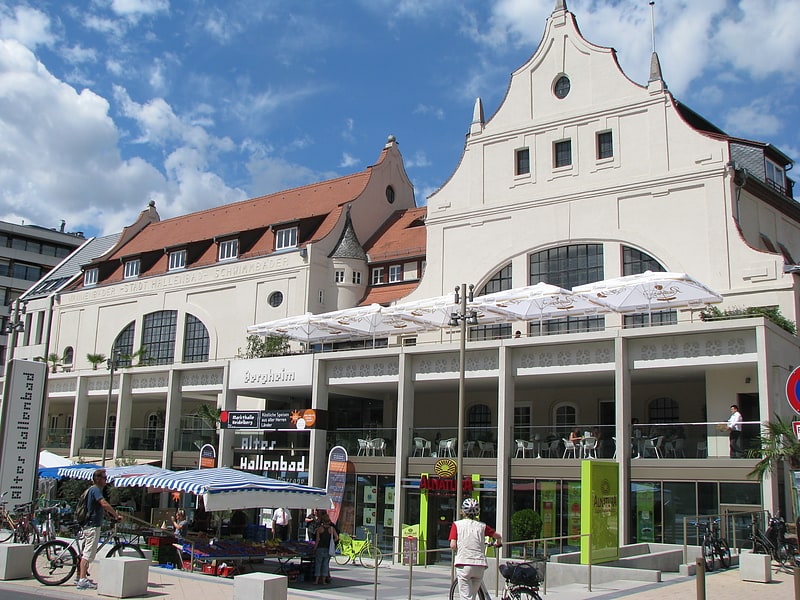
The Old Indoor Swimming Pool is a former indoor swimming pool in the Bergheim district of Heidelberg. Opened in 1906, the Art Nouveau building was closed in 1981. After years of vacancy, it was used for gastronomy, retail and events from 2013 to 2016.
Address: Poststr. 9, 69115 Heidelberg
Völkerkundemuseum

Museum
Address: Hauptstrasse 235, Heidelberg
Gaisbergturm
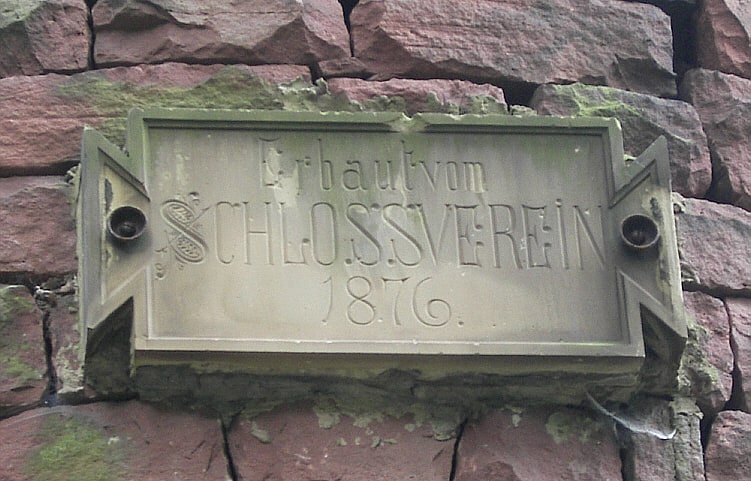
The Gaisberg Tower in Heidelberg is a monument standing at the transition of the small plateau of the 375.6 m above sea level Gaisberg to the northwest slope. Designed by the architect Fritz Seitz, it was built in 1876 by the Heidelberg Castle Society. The tower, which is over 13 meters high, can be climbed via 85 differently shaped steps on a spiral staircase running around the outside. The lighthouse of Alexandria probably served as a model. In addition, the shape resembles some oriental spiral minarets. The masonry of the tower consists of red sandstone ashlars and was stacked without mortar or other binding agents.
The Gaisberg Tower was restored in 1926/27 and 2003/04. The last restoration was carried out by the city of Heidelberg and the West-Heidelberg district association.
Carl Bosch Museum
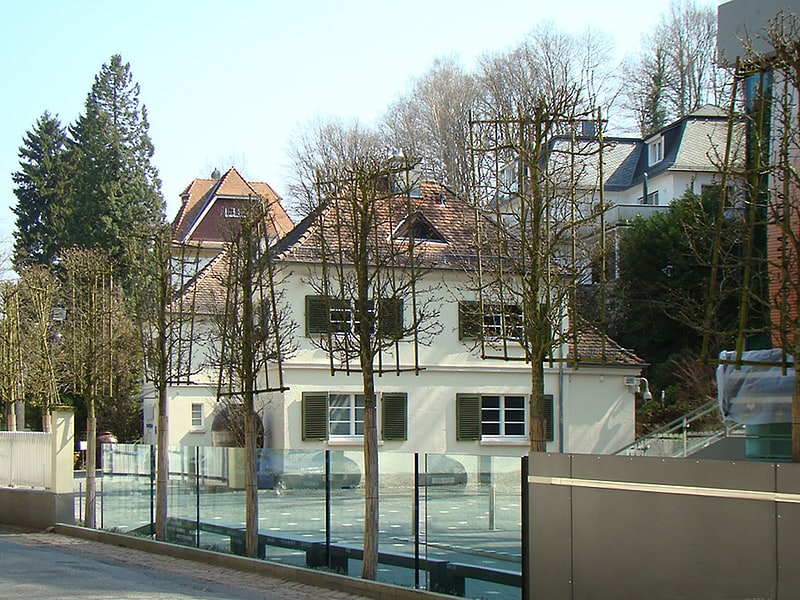
As a museum of technology, the Carl Bosch Museum Heidelberg shows the life and work of Heidelberg's Nobel Prize winner Carl Bosch on more than 300 m² and two outdoor areas and was founded in 1998. Located in Schloss-Wolfsbrunnenweg, the building in which the museum is housed once served as a residence for Bosch's chauffeurs and as a garage for Bosch's automobiles. Carl Bosch's residence was Villa Bosch a few hundred meters from the garage house.
The topics covered range from the development of chemical technology to the role of I.G. Farbenindustrie under National Socialism. It traces the path from the laboratory beginnings to the development of huge industrial complexes of high-pressure technology and documents their economic-political effects.
At the following stations, the visitor is given all relevant information about the person as well as his activities as a chemist: Curriculum vitae, business leader, private citizen, Nobel Prize winner, research laboratory, high-pressure workshop, industrial facilities, Limburgerhof.
Address: Schloss-Wolfsbrunnenweg 46, 69118 Heidelberg
Heidelberg-Königstuhl State Observatory
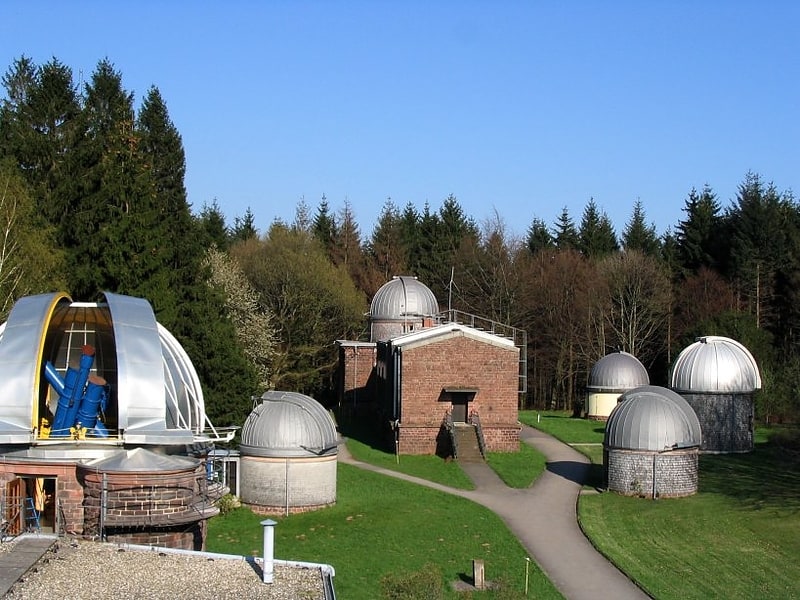
Also known as: Landessternwarte Heidelberg-Königstuhl
Astronomical observatory. Heidelberg-Königstuhl State Observatory is a historic astronomical observatory located near the summit of the Königstuhl hill in the city of Heidelberg in Germany. The predecessor of the current observatory was originally opened in 1774 in the nearby city of Mannheim but degradation of observational conditions there resulted in a relocation to the Königstuhl in 1898.
The observatory forms part of the Center of Astronomy of the University of Heidelberg. The Max Planck Institute for Astronomy opened on an adjacent site in 1967. Prof. Dr. Andreas Quirrenbach is the observatory's director since 2005.[25]
Bismarckplatz Park
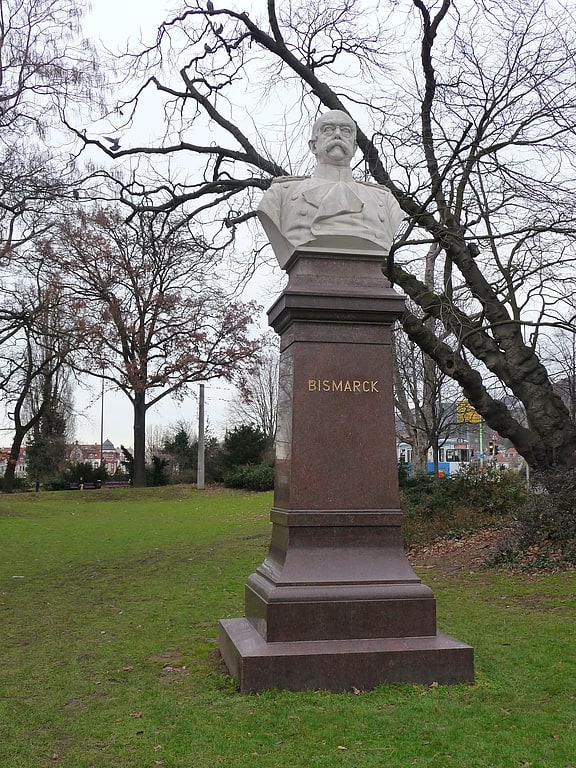
Bismarckplatz in Heidelberg is located at the western end of Hauptstraße and forms the transition to the Bergheim district. It is one of Heidelberg's central squares and, along with the forecourt of the main train station, forms the most important junction of the city's public transport system.
Neue Universität

Also known as: Ruprecht-Karls-Universität Heidelberg
Public university in Heidelberg, Germany. Heidelberg University, officially the Ruprecht Karl University of Heidelberg, is a public research university in Heidelberg, Baden-Württemberg, Germany. Founded in 1386 on instruction of Pope Urban VI, Heidelberg is Germany's oldest university and one of the world's oldest surviving universities. It was the third university established in the Holy Roman Empire.
Heidelberg has been a coeducational institution since 1899. The university consists of twelve faculties and offers degree programmes at undergraduate, graduate and postdoctoral levels in some 100 disciplines. Heidelberg comprises three major campuses: the humanities are predominantly located in Heidelberg's Old Town, the natural sciences and medicine in the Neuenheimer Feld quarter, and the social sciences within the inner-city suburb Bergheim. The language of instruction is usually German, while a considerable number of graduate degrees are offered in English as well as some in French.
As of 2021, 57 Nobel Prize winners have been affiliated with the city of Heidelberg and 33 with the university itself. Modern scientific psychiatry, psychopharmacology, psychiatric genetics, environmental physics, and modern sociology were introduced as scientific disciplines by Heidelberg faculty. Approximately 1,000 doctorates are completed every year, with more than one third of the doctoral students coming from abroad. International students from some 130 countries account for more than 20 percent of the entire student body.
Heidelberg is a German Excellence University, part of the U15, as well as a founding member of the League of European Research Universities and the Coimbra Group. The university's noted alumni include eleven domestic and foreign heads of state or heads of government. In international comparison Heidelberg University occupies top positions in rankings and enjoys a high academic reputation.[26]
Address: Grabengasse 1, 69117 Heidelberg
Dossenheim
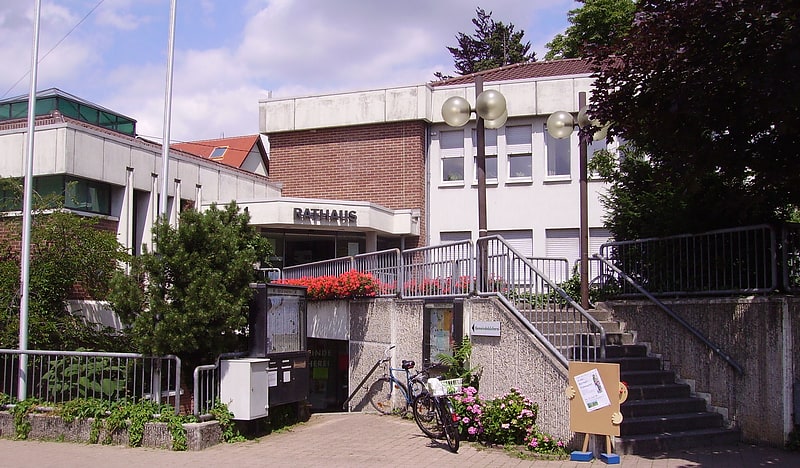
Municipality in Germany. Dossenheim is a municipality in the Rhein-Neckar-Kreis in Baden-Württemberg, Germany.
It is located on Bergstraße and Bertha Benz Memorial Route.[27]
Jesuit Church
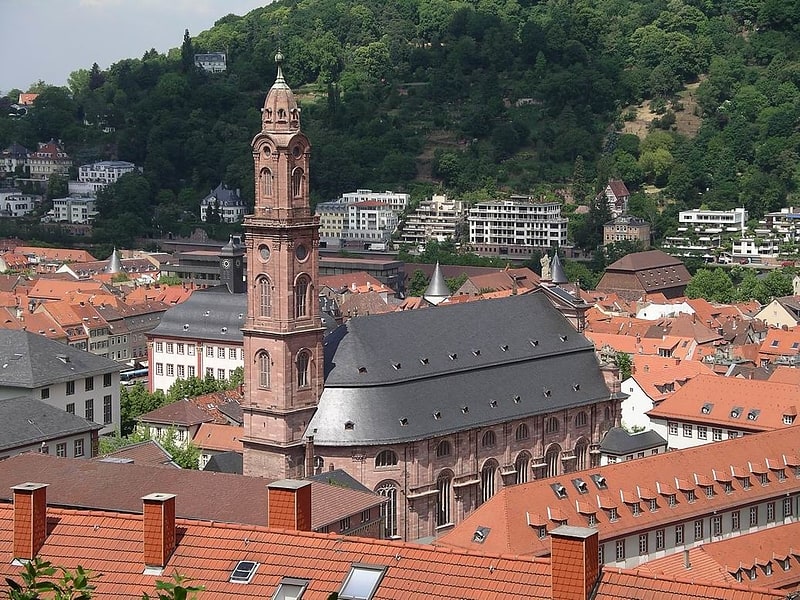
Next to the Heiliggeistkirche, the Jesuitenkirche is the largest and most important church in Heidelberg and forms the architectural focal point of the former Jesuit quarter in the old town in the immediate vicinity of the Universitätsplatz. Today, it is the main church of the Roman Catholic Holy Spirit Parish in Heidelberg's Old Town. The church was built from 1712 to 1759 in the Baroque style, the neo-Baroque tower was added only in the years 1868 to 1872. The church, which is not oriented to the east as usual but to the south, is a "remarkable as well as unusual building".
Attached to the church is the Museum of Sacred Art and Liturgy with a treasury. There are exhibited, among other things, figures of saints, chalices and monstrances, as well as chasubles from past centuries.
Address: Schulgasse 4, 69117 Heidelberg